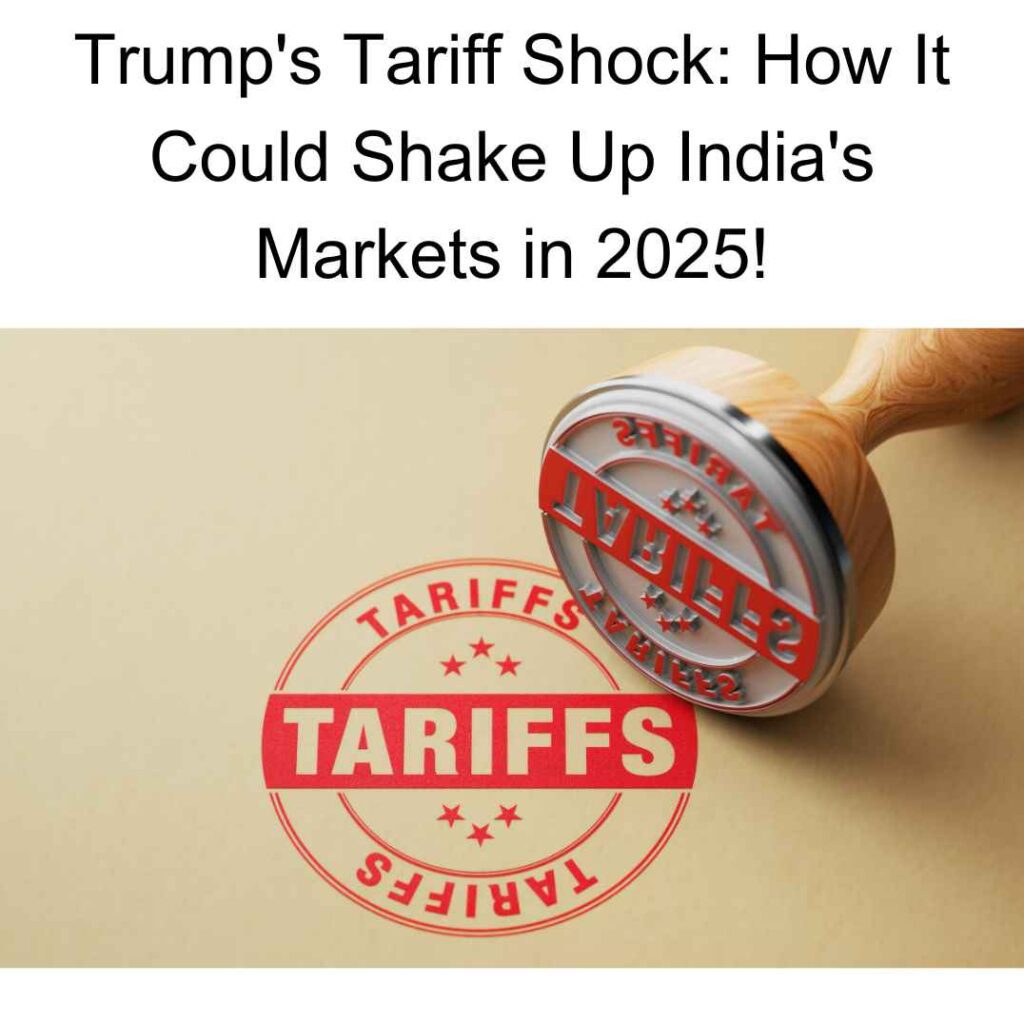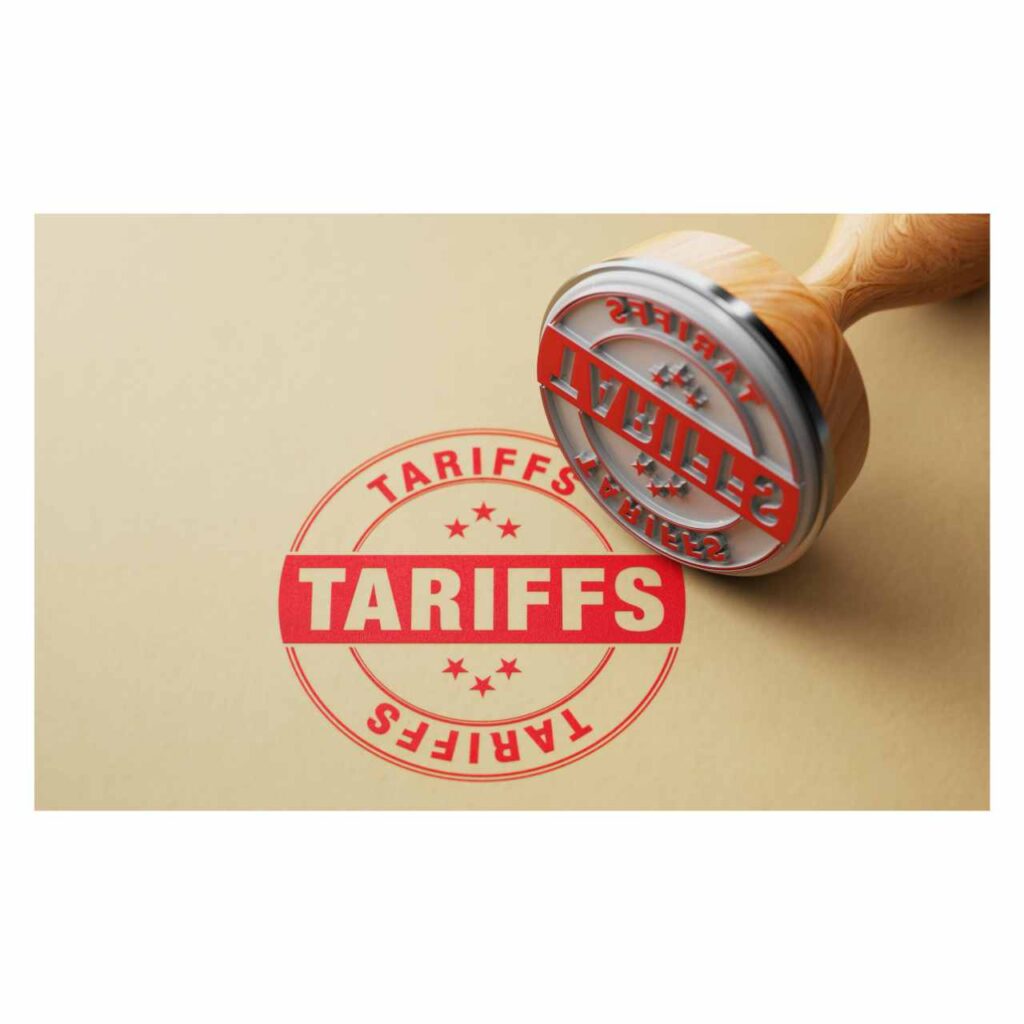Introduction
In February-March 2025, Donald Trump is expected to raise tariffs on imports if he returns to office. Tariffs are extra taxes placed on goods coming into a country. This move could impact global trade, including India. While it might seem like an issue for businesses and policymakers, it can also affect everyday people. But how? Let’s break it down in simple terms.
What Are Tariffs and Why Do They Matter?
A tariff is a tax imposed by a government on imports from other countries. When Trump raises tariffs, American companies and consumers must pay more for foreign goods. This is usually done to protect local businesses and reduce reliance on imports. However, it can also lead to trade wars, economic slowdowns, and higher prices for consumers.
Since India exports many products to the U.S., including pharmaceuticals, textiles, IT services, and auto parts, this decision could impact Indian businesses and markets.
Immediate Impact on Indian Stock Markets
When global trade policies change suddenly, stock markets react quickly. If Trump announces a tariff hike, Indian stock markets could experience volatility. Here’s why:
- Investors Panic: Big investors and foreign institutions may pull their money from Indian stocks due to uncertainty.
- Export-Driven Companies Suffer: Indian companies that sell products to the U.S. might see reduced demand, lowering their stock prices.
- Rupee vs. Dollar: Higher tariffs could weaken the Indian rupee against the U.S. dollar, making imports more expensive.
Sectors like IT, pharmaceuticals, and textiles—key contributors to India’s economy—could see fluctuations in stock prices. Investors will have to be cautious and watch how policies unfold.
How Indian Businesses Will Be Affected

Different industries in India will experience varying levels of impact. Here’s what to expect:
1. IT and Services Sector
The U.S. is a major client for India’s IT services, with companies like TCS, Infosys, and Wipro relying heavily on American clients. While tariffs may not directly affect IT services, any restrictions on outsourcing could hurt India’s booming tech sector.
2. Pharma and Healthcare
India is one of the largest suppliers of generic medicines to the U.S. If tariffs are imposed, Indian pharmaceutical companies could face higher costs, making drugs more expensive in the U.S. This could reduce demand and impact the industry’s growth.
3. Manufacturing and Auto Industry
Indian car parts and steel exports to the U.S. could become more expensive, reducing sales. This could slow down growth in India’s auto industry, affecting companies like Tata Motors and Mahindra.
4. Textile and Apparel Industry
India exports a large number of clothes and fabrics to the U.S. Higher tariffs could make Indian textiles less competitive, benefiting other countries with lower duties.
Effects on Everyday Life in India
While trade policies may seem far removed from daily life, they have real consequences:
- Jobs Could Be Affected: If companies face losses due to lower exports, they may cut jobs or slow hiring.
- Higher Import Costs: If the rupee weakens due to market instability, imported goods like electronics, fuel, and gadgets could become expensive.
- Slow Economic Growth: A decline in exports could slow down India’s economic growth, affecting businesses and wages.
Will India Benefit in Any Way?
Not all effects of Trump’s tariff hike will be negative for India. Some industries might find new opportunities:
- More Local Production: If the U.S. starts sourcing fewer products from China due to trade tensions, India could step in as an alternative supplier.
- Boost for Domestic Markets: If Indian exporters lose access to the U.S. market, they might focus on domestic sales, benefiting local consumers.
- New Trade Alliances: India might strengthen trade partnerships with Europe, Southeast Asia, or Africa to counter losses from the U.S.
What Should Investors and Businesses Do?
With uncertainty ahead, here’s how Indian investors and businesses can prepare:
✅ Diversify Investments: Investors should avoid putting all their money in sectors heavily dependent on the U.S. market. ✅ Monitor Currency Exchange Rates: The rupee’s value against the dollar will be a key factor in trade movements. ✅ Explore New Markets: Businesses that rely on U.S. exports should start exploring alternative markets in Asia and Europe. ✅ Stay Informed: Tracking news and government policies can help in making informed financial decisions.
Final Thoughts
Trump’s potential tariff hike in 2025 could bring uncertainty to Indian markets, but it also presents opportunities. While some industries might struggle, others could find new ways to grow. Investors and businesses must stay prepared and adapt to the changing global trade landscape.
As India continues to grow as a global economic power, strategic planning and smart decision-making will be key to navigating these challenges. Stay informed, stay prepared, and watch how the world reacts to these changes!

















What do you think?
It is nice to know your opinion. Leave a comment.